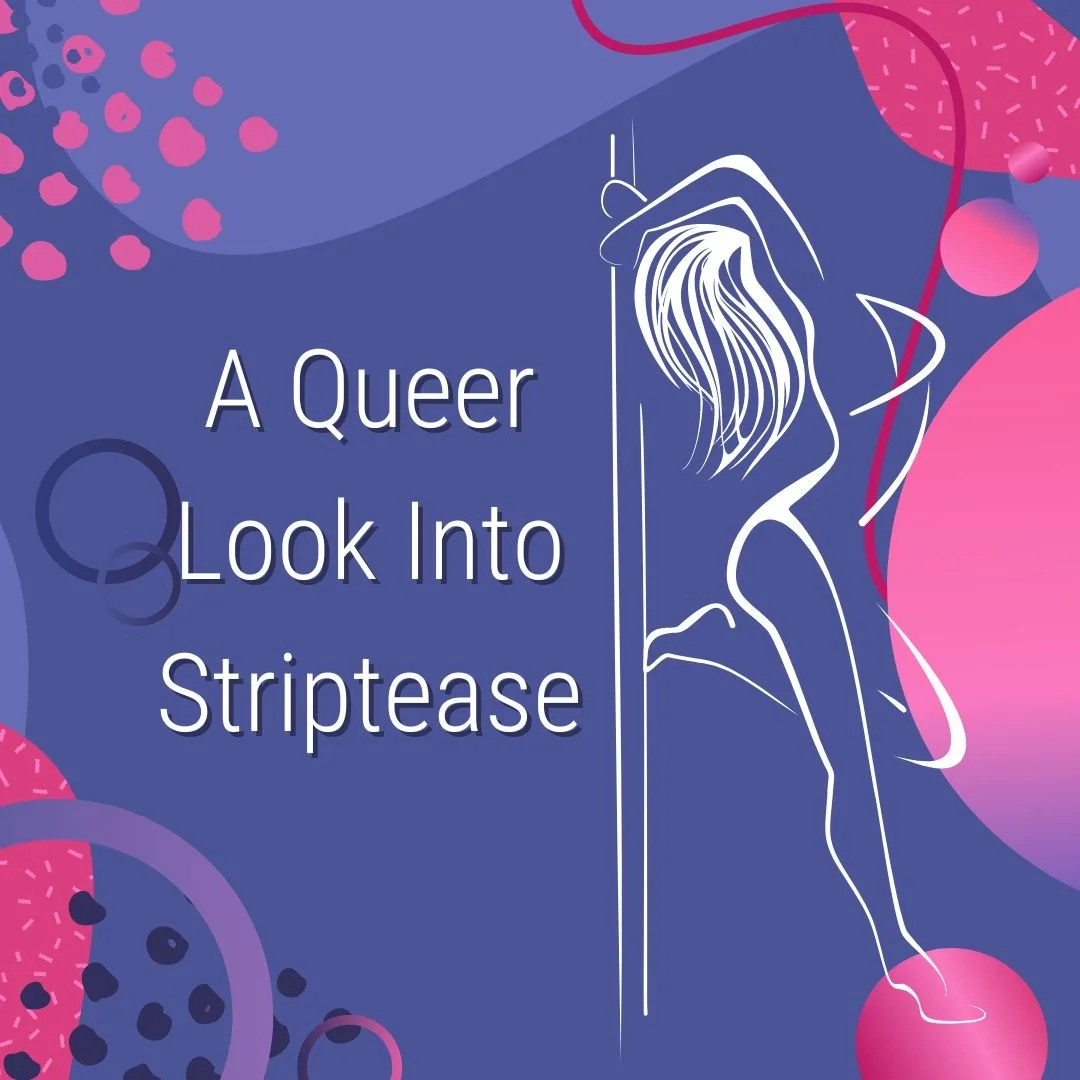The history of sex work is deeply rooted in the queer community, particularly queer people of color in marginalized areas. In more recent years, queer people have reclaimed certain sex work industries and morphed them into expressions of self-love and power. An example of this is the burlesque industry, which has roots in performance dance but also stripteases sex work. In the 20th century, this art was primarily done by cisgender white women, but now some of the most successful performers are BIPOC such as Jeez Loueez and Samson Night. Burlesque as an industry has begun taking a queer approach to gender and sexuality, using costuming, music, dance, and striptease to play with these concepts.
Queer women have found homes in burlesque troupes like Honey Burlesque, a collaborative of queer women and non-binary people each with their own acts and stage personas. Honey Burlesque hosts special events and participates in queer festivals like Girls in Wonderland, and the Orlando pride celebration. Another troupe that specializes in more modern styles of burlesque is Les Vixens, the lesbian collaborative. These groups create intentionally queer spaces for performance and business and uplift other queer dancers in the process.
Traditional burlesque styles involved elegant and expensive outfitting like ball gowns, fur coats, stiletto heels, and flashy jewelry. With the help of queer performers, the current style is so much more expansive. In the top performances, you will see some of this classic style juxtaposed with performers playing with gender expression and showcasing overt, graphic sexuality. The costumes might be humorous or altogether ridiculous as the industry shifts from a formulaic striptease to an exploration of gender and sex.
There’s also a rich history of drag performance in the queer community, which may or may not involve a striptease component. Still, the way drag queens and kings perform as contractors and are paid primarily in tips does connect to the sex work industry, although these art forms really can’t be contained to any one label.
Many queer people also work in the stripping industry, whether that be in designated queer spaces or in straight-dominated spaces. In queer spaces, stripping can be an incredibly positive environment for dancers who are surrounded by women and faceless disrespect as a result of this. In one story, dancers in a queer club were surrounded by adoring women and showered with attention and gifts.
But queer clubs or even just designated queer spaces are few and far between, especially if you live outside a major city or in an area known for homophobia. For many dancers, finding a queer space isn’t really an option, and even if it is, it might not provide enough income on its own. Straight-dominated spaces can be intimidating for queer people as there is still danger of being persecuted for your gender expresssion or sexuality in a space that was not designed to care for you. Many queer dancers do find success in straight clubs, such as Iris in a Vice story. While dancers who are not attracted to men might have to focus their attention on the male customers with more intention, they also are able to serve couples and other queer women in these spaces and find financial success as well. Some report enjoying the power dynamic of being “untouchable” to these men in the sense that the men can watch them dance, but will never be able to truly win them over.
Dancers who have worked at both kinds of clubs often report dancing differently for their heterosexual or queer audiences. In straight clubs, you make the most money by appealing to the male gaze: showing off your body and emphasizing your sexuality. In women-dominated or queer spaces, dancers might express more personality and be able to interact more with their audiences. This is in part due to an increased sense of security in queer spaces, but also representative of the difference between heterosexual male desire and what scholars call “the female gaze.” Oftentimes the male gaze is associated with submissive behavior, so dancers in this environment may be most successful in portraying vulnerable or naturally inferior fantasies (for example, a “schoolgirl” costume) or simply emphasizing their bodies through movement. The female gaze, on the other hand, favors confidence and personality, viewing the women as complex humans rather than sexual objects. Dancers in these clubs are most successful when interacting with their audience and standing out with unique adornments like colorful hair, glittery outfits, or on-stage theatrics
Unfortunately, when it comes to sex work, there’s controversy and hostility even within the queer community. Some queer people see others dancing in straight clubs as a rejection of queer identity or an undue service to the oppressors. They focus on the profitization of the club and club owners rather than the individual success each dancer can achieve. Dancers regardless of identity face difficulty cultivating relationships, both personal and romantic, when those around them are judgemental about their profession. As far as the narrative around sex work has progressed, there is still so much stigma that deeply affects the lives and relationships of those in the industry. Knowing this, it is that much more important to learn about the history of such important historical industries such as queer stripping, as well as supporting those who work in it. Dance troupes and individuals perform all across the country, but even if you aren’t able to see a show in person, consider supporting their social media pages or donating online to keep the legacy of queer dance alive.
By Sydney Sullivan




